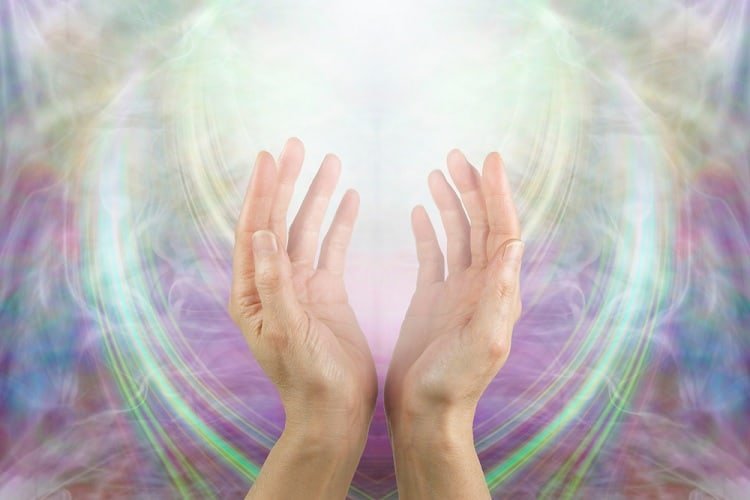The Law of Attraction (LoA), an influential concept in personal development and self-help ideologies, proposes that the universe responds to the frequencies of our thoughts and emotions, aligning our life’s circumstances accordingly. The central tenet is succinctly captured in the phrase, “like attracts like,” suggesting that positive thoughts attract positive experiences, and vice versa. While it has ancient philosophical roots, the LoA has seen a resurgence in popular culture in recent years, notably through books such as Rhonda Byrne’s “The Secret.”
The theory operates on the premise that our thoughts have an energetic signature, each vibrating at certain frequencies. By aligning these frequencies with our desires, proponents of the LoA argue, we can “attract” those desires into our reality. Techniques like visualization, affirmations, and gratitude exercises are often employed to foster this alignment.
As the illustrious Paulo Coelho once penned, “When you want something, the whole universe conspires in order for you to achieve it.” If your curiosity has been piqued, yearning to unravel the secrets of harnessing this enigmatic force, explore the following article. Immerse yourself in the mesmerizing world of the Law of Attraction and unlock the power to transform your dreams into the reality.
Definition of the Laws of Attraction

The Law of Attraction is a concept that suggests that our thoughts and emotions have a direct impact on the experiences we have in our lives. According to this belief, we can attract positive or negative outcomes based on the way we think and feel.
The basic idea is that if we focus our thoughts and emotions on positive outcomes, such as love, abundance, and success, we will attract more of those experiences into our lives. On the other hand, if we focus on negative thoughts and emotions, such as fear, anger, and lack, we will attract more negative experiences.
The Law of Attraction is often associated with the New Thought movement, which emerged in the 19th century and emphasizes the power of positive thinking and the interconnectedness of all things. The concept gained popularity in the early 21st century with the publication of books like “The Secret” by Rhonda Byrne.
However, it’s important to note that the Law of Attraction is not scientifically proven, and some people criticize it for promoting a “blame the victim” mentality and for oversimplifying the complexities of life.
Origin of the concept
The concept of the Law of Attraction has been around for centuries and can be traced back to ancient philosophical and spiritual traditions. For example, the Hindu concept of Karma suggests that our actions and thoughts have a direct impact on our lives and our future experiences.
In the 19th century, the New Thought movement emerged in the United States, which emphasized the power of positive thinking and the interconnectedness of all things. Many of the ideas associated with the Law of Attraction can be traced back to this movement and its leaders, such as Phineas Quimby and Mary Baker Eddy.
In the early 20th century, authors like Napoleon Hill and Wallace Wattles popularized the concept of using positive thinking and visualization to achieve success in their books, “Think and Grow Rich” and “The Science of Getting Rich,” respectively.
More recently, the Law of Attraction gained widespread popularity with the publication of “The Secret” by Rhonda Byrne in 2006, which brought the concept to a wider audience and inspired numerous follow-up books, seminars, and coaching programs.
Is the Law of Attraction real?
The validity of the Law of Attraction (LoA) is a matter of debate, primarily due to its philosophical and speculative nature. As a concept, the LoA postulates that an individual’s thoughts can influence their reality, that like attracts like, and therefore positive or negative thoughts can generate corresponding experiences. However, this remains a theoretical idea rather than a scientifically verifiable phenomenon. Similar to the Buddhist Law of Cause and Effect, only those who have personally experienced it can come to their own conclusions.
As of LotusBuddhas research, there has been no comprehensive scientific evidence to validate the Law of Attraction. While certain psychological phenomena can be seen as parallel or overlapping with the principles of the LoA, such as the self-fulfilling prophecy, confirmation bias, or the impact of positive thinking on personal well-being, they do not constitute definitive proof of the LoA as a universal law.
- Self-fulfilling prophecies refer to the psychological phenomenon where an individual’s belief or prediction about a situation influences their behavior in such a way that the belief or prediction comes true. This aligns to some extent with the Law of Attraction’s emphasis on thoughts influencing outcomes, but it is not equivalent to the claim that all thoughts or mental states can manifest in reality.
- Confirmation bias is the tendency to search for, interpret, favor, and recall information in a way that confirms one’s preexisting beliefs or hypotheses. If a person believes in the Law of Attraction, they may be more likely to notice and remember instances where their thoughts seemed to influence their circumstances and dismiss or forget instances where this did not occur.
- The influence of positive thinking on personal well-being has been documented in numerous studies. Optimistic outlooks can contribute to better health, increased longevity, and improved quality of life. However, this is not the same as the assertion of the Law of Attraction, which suggests that thoughts alone can shape one’s reality.
The difference between these psychological phenomena and the Law of Attraction lies in the scope and mechanism of their influence. While self-fulfilling prophecies, confirmation bias, and the effects of positive thinking are well-documented psychological phenomena, they do not support the idea that the universe inherently operates by a law where thoughts directly manifest into physical reality.
How does the Law of Attraction work?

At its core, the Law of Attraction is centered around the notion that like attracts like. This is often interpreted to mean that the thoughts we have can attract corresponding circumstances. For instance, if one maintains a positive mindset and visualizes success, according to the Law of Attraction, these thoughts and visualizations will eventually materialize in the physical world. Similarly, negative thinking is believed to attract undesired outcomes.
The proponents of the Law of Attraction argue that it works through a few mechanisms:
- Self-fulfilling prophecy: This mechanism posits that if a person strongly believes in something (positive or negative), they will subconsciously behave in ways that align with those beliefs, leading to a greater likelihood of their thoughts manifesting as reality.
- Selective attention and confirmation bias: Once a person is primed to think about certain outcomes (positive or negative), they are likely to notice and selectively remember situations that confirm these expectations while ignoring those that don’t. This may give the illusion that one’s thoughts are influencing reality more than they actually are.
- The power of positivity: Positive thinking, irrespective of the Law of Attraction, has been shown to have several beneficial effects on health, well-being, and motivation, leading to better outcomes in life. Therefore, if someone believes in the Law of Attraction and uses it to foster positive thinking, they may indirectly improve their life circumstances through these benefits of positivity.
Although the Law of Attraction has grown in popularity, particularly within the realms of self-help literature and motivational speaking, it is not a scientific law in the conventional sense and lacks robust empirical support from a scientific perspective. The Law of Attraction is better understood as a psychological or philosophical concept rather than a demonstrable law of physics or natural science. This does not negate its potential usefulness to some individuals, but it does complicate any authoritative claims about its operation or efficacy.
Some Law of Attraction exercises
The Law of Attraction (LoA) is a philosophy that posits a correlation between one’s thoughts and life circumstances, with the premise being that like attracts like. The application of the LoA often involves various techniques and exercises designed to foster positive thinking, clarity of goals, and a heightened sense of personal agency. Here are some commonly recommended techniques:
- Vision board: Creating a vision board is a widely utilized LoA technique. A vision board is a visual representation of one’s goals and desires. This could be a physical board on which pictures and words that represent your goals are pasted, or a digital one using various software tools. The vision board serves as a daily reminder of what you are working towards, aiding in visualization and concentration on your goals.
- Affirmations: Affirmations are positive statements that help you challenge and overcome self-sabotaging and negative thoughts. They are typically in the present tense and are statements that you would like to be true. Examples could include statements like “I am deserving of success” or “I attract positive energy.” Regular repetition of these affirmations can assist in cultivating a positive mindset.
- Meditation: Meditation is another widely used technique in the practice of the LoA. It can help in clearing your mind, reducing anxiety, and focusing on your goals. There are various forms of meditation, including mindfulness meditation, loving-kindness meditation, or guided visualization, all of which can aid in the effective practice of the LoA.
- Gratitude journal: Maintaining a gratitude journal is a practice that involves regularly listing things for which you are grateful. This can help foster a sense of positivity and contentment, and attract more positive experiences.
- Scripting: Scripting is a LoA exercise that involves writing a detailed narrative of the life you wish to lead, as if it’s already happening. This technique is believed to help clarify and solidify your vision, helping to bring it into your reality.
- Mental rehearsal: This involves repeatedly visualizing the successful completion of a goal or task. By mentally rehearsing the steps involved in achieving a goal, you can familiarize yourself with the process, reduce anxiety, and increase the chances of successfully completing the task.
- Positive visualization: This is a central technique in the LoA, which involves creating detailed mental images of the desired outcome. The idea is to visualize the goal as if it has already been achieved, incorporating as many senses as possible to make the visualization feel real.
- The 55×5 technique: This technique involves writing a specific desire 55 times a day for 5 consecutive days. The repetition is believed to affirm the desire into your subconscious mind, making it more likely to manifest into reality.
While these techniques are commonly associated with the Law of Attraction, it’s important to note that they are tools for personal growth and motivation rather than scientifically proven methods. Their efficacy can vary based on individual belief, perception and dedication to practice.
Some common Law of Attraction affirmations
Affirmations in the context of the Law of Attraction (LoA) are positive, self-empowering statements intended to manifest specific outcomes or states of being. They are rooted in the belief that verbalizing and internalizing such statements can shape one’s thoughts, feelings, and actions in a way that aligns with desired goals. Here are some common affirmations associated with the LoA, categorized by various life domains:
General Well-being and Positivity:
- “I am full of positive energy and my life is in balance.”
- “Every day in every way, I am becoming more successful.”
- “I am a magnet for joy, love, and abundance.”
Health and Wellness:
- “My body is healthy, and my mind is strong.”
- “I nourish my body with healthy food and positive thoughts.”
- “Every cell in my body vibrates with energy and good health.”
Wealth and Success:
- “I attract wealth and prosperity with ease.”
- “I am a successful individual and success comes naturally to me.”
- “Money comes to me in expected and unexpected ways.”
Relationships and Love:
- “I am deserving of love, and I attract it effortlessly.”
- “My relationships are strong, healthy, and full of love.”
- “I am loved, and I am at peace with myself and others.”
Career and Professional Growth:
- “I attract exciting opportunities for growth and development.”
- “I am confident, competent, and achieve great things in my career.”
- “I am appreciated and valued in my workplace.”
Personal Growth and Self-Improvement:
- “I am constantly evolving, learning, and becoming a better version of myself.”
- “I let go of negative self-talk and embrace self-love and self-compassion.”
- “I am in charge of my life and confident in the decisions I make.”
LotusBuddhas must to note that these affirmations should be used as tools to foster a positive mindset, increase self-awareness, and enhance motivation. They should be tailored to one’s personal beliefs and goals for optimal effectiveness. Additionally, while these affirmations can contribute to a proactive approach to life and goal achievement, they are not scientifically proven methods for manifesting specific outcomes. Affirmations can be powerful, but they work best when paired with consistent action and realistic goal-setting.
How to use the Law of Attraction in your life
Though not a scientifically proven law, it can serve as a psychological strategy for personal development. The following steps provide a guideline on how to incorporate the principles of the Law of Attraction in everyday life:
- Clarify your goals: Clearly articulate what you want in your life. This could include aspects of personal growth, relationships, career, health, or wealth. The more specific you are, the easier it will be to visualize and focus on your desired outcome.
- Visualize your desired outcomes: Create a vivid mental image of your desired goal as if it has already been achieved. This involves all the senses – what you see, what you hear, and especially, what you feel. Regular visualization exercises can help to maintain focus on your goals and keep a positive mindset.
- Maintain positive thinking and emotions: Foster a sense of optimism and positivity. This does not mean ignoring negative feelings or challenges, but rather cultivating resilience and a positive outlook even in the face of adversity. This could involve practices such as positive affirmations, meditation, or mindfulness exercises.
- Take action: While the Law of Attraction emphasizes thoughts, taking practical steps towards your goals is essential. This is where the principles of the LoA dovetail with more conventional advice on achieving personal goals: You must actively pursue your goals, take risks where necessary, and be willing to put in the work required to achieve your desired outcome.
- Practice gratitude: Gratitude helps to reinforce positivity and the abundance mindset. Regularly express gratitude for what you already have and the progress you are making towards your goals. This could be achieved through practices like keeping a gratitude journal or mindfully acknowledging the things you are thankful for each day.
- Monitor and adjust your thoughts: Be aware of your thought patterns. Negative thoughts are natural, but should not be dwelled upon. Challenge these thoughts when they arise and replace them with more positive or constructive thoughts. Cognitive techniques such as cognitive behavioral therapy (CBT) techniques could be helpful in this regard.
- Be patient and persistent: Change often takes time and the outcomes may not always match the timeline you have in your mind. Maintain your focus, keep practicing positivity, and stay resilient even if immediate results are not visible. Persistence is key in achieving long-term goals.
Common mistakes people make when using the Law of Attraction
The Law of Attraction (LoA) has been popularized as a strategy for achieving personal goals, fostering positivity, and manifesting desires into reality. However, in the process of applying the LoA, several common mistakes can limit its potential effectiveness. Here are some frequently observed errors:
- Vague goals: The effectiveness of the LoA is often undermined when individuals fail to articulate specific, clear goals. Visualizing a better life, for instance, is an abstract idea that lacks the specificity needed for targeted action. Clear, detailed goals provide a concrete target to focus on, increasing the likelihood of success.
- Neglecting action: The LoA’s emphasis on thoughts and positivity can sometimes lead individuals to overlook the importance of action. Achieving goals invariably requires concrete actions. The LoA should ideally serve as a complement to, not a replacement for, goal-oriented behaviors.
- Overemphasis on positivity: While maintaining a positive outlook is central to the LoA, an overemphasis on positivity can result in the denial or suppression of negative emotions. It’s important to acknowledge that negative emotions are a normal part of life, and dealing with these feelings in a healthy way is crucial for emotional wellbeing.
- Impatience: Change often takes time, and the desired outcomes may not manifest immediately. Some individuals become impatient and give up when they don’t see quick results. It’s essential to maintain patience and persistence while working towards your goals.
- Fixed expectations: Practitioners of the LoA sometimes have fixed expectations about how and when their desires should manifest. This rigidity can lead to disappointment and discourage continued effort. It is important to maintain a certain level of flexibility, allowing for the possibility that outcomes may not always look as expected.
- Lack of self-belief: The LoA heavily relies on the power of belief. If you harbor doubts or lack belief in your capacity to achieve your goals, it can undermine the effectiveness of the LoA. Confidence and self-assurance are key components in effectively employing this strategy.
- Neglecting personal responsibility: The LoA should not serve as an excuse to avoid personal responsibility or accountability. It should not be used to justify failures or mistakes as mere “manifestations” of one’s thoughts. Personal growth often involves acknowledging one’s mistakes and learning from them.
Effectively practicing the Law of Attraction involves clear goal setting, complementing visualization with action, acknowledging and managing negative emotions, practicing patience, maintaining flexible expectations, cultivating self-belief, and assuming personal responsibility. Avoiding these common mistakes can enhance the utility of the LoA as a motivational tool and contribute to the achievement of personal goals.
Books or resources about the Law of Attraction
The Law of Attraction (LoA) has been a subject of interest for many authors and thought leaders, resulting in a plethora of books and resources that delve into its principles and application. Here are some notable ones:
- “The Secret” by Rhonda Byrne: Perhaps one of the most popular books on the LoA, “The Secret” presents the concept as a universal law that dictates that we attract what we think about. The book details techniques for visualization and positive thinking to manifest desires.
- “Ask and It Is Given: Learning to Manifest Your Desires” by Esther and Jerry Hicks: The authors, also known as ‘Abraham-Hicks’, are significant contributors to the current understanding of the LoA. The book contains exercises and lessons to help readers manifest their desires.
- “The Power of Intention: Learning to Co-create Your World Your Way” by Wayne W. Dyer: Although not strictly about the LoA, Dyer’s book discusses how our intentions—conscious or unconscious—shape our experiences and reality, a concept closely aligned with the principles of the LoA.
- “The Law of Attraction: The Basics of the Teachings of Abraham” by Esther and Jerry Hicks: This is another comprehensive guide by the Hicks duo that provides an in-depth understanding of the LoA from their perspective.
- “You Are a Badass: How to Stop Doubting Your Greatness and Start Living an Awesome Life” by Jen Sincero: This book, while not solely about the LoA, provides practical advice on how to use the LoA and other tools to overcome self-doubt and build a life you love.
- “The Magic” by Rhonda Byrne: A sequel to “The Secret”, this book focuses on gratitude and how it connects to the LoA, with a 28-day guide to incorporate gratitude practices into your life.
In addition to these books, there are numerous online resources, forums, and platforms where one can explore the LoA, such as:
- The Abraham-Hicks website: The official site for Esther and Jerry Hicks provides a wealth of information about their teachings on the LoA.
- “The Secret” website: The official site for Rhonda Byrne’s “The Secret” offers resources, success stories, and merchandise related to the book and the LoA.
- MindValley: An online personal growth platform that offers courses and resources on a wide range of topics, including the LoA.
- YouTube: Many thought leaders and influencers on the LoA maintain channels where they share videos on the principles and application of the LoA.
Please remember that the efficacy of the LoA, and thus the applicability of these resources, is subjective and varies greatly among individuals. The LoA should be understood and applied within the context of one’s personal belief system and in tandem with practical action toward goals.
In conclusion, Law of Attraction is a boundless wellspring of potential, infusing life with rapture and casting a radiant light upon the shadows of adversity. Embrace its transformative power, and you will find the courage to surmount life’s challenges with grace and ease. Dare to dip your toes into its enchanting waters and observe your desires materialize before your very eyes. As you embark on this captivating journey, be sure to share this article, casting the seeds of knowledge to the winds, and watch them take root in the lives of others.










